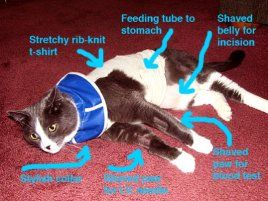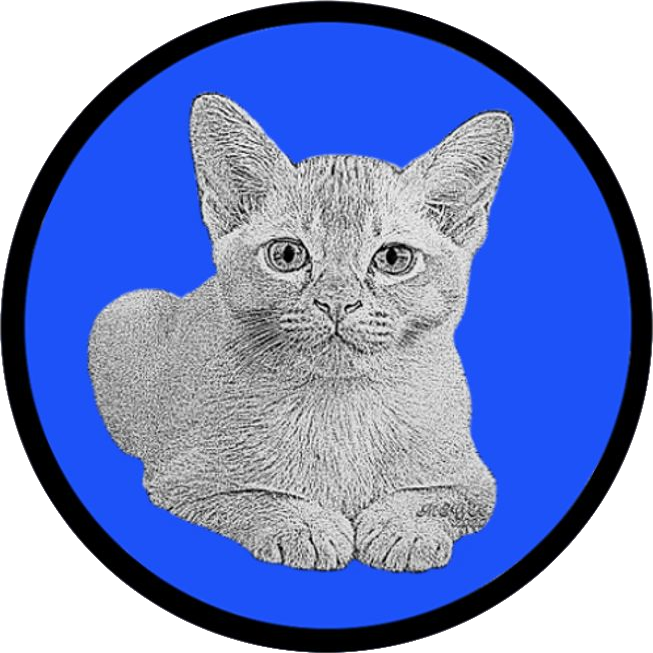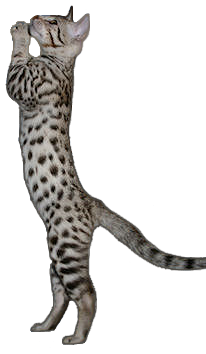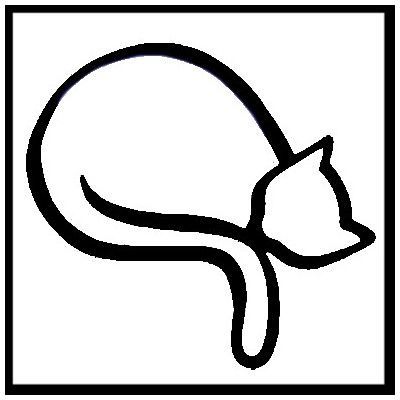|
|
BREED INFO > HYPOKALAEMIC MYOPATHY
Hypokaleamia is a shortage of potassium in the blood which creates weakness. Although muscular diseases occur relatively rarely in cats, a number of congenital feline myopathies have been described during the last 20 years. Some are reported only in specific breeds, including hypokalaemic myopathy in Burmese cats.
In cats kidney failure is considered in most cases of Hypokaleamia (chronic). It is also seen in young Burmese kittens of 2-6 months old, where a temporary increase in the amount of potassium that enters cells, can result in weakness.
The most obvious symptoms are general weakness, ventroflexion (extreme weakness) of the neck, stiff walking, reluctance to move, muscle aches, head shakes, walking on the wrists, tendency to drop through the ankles and sit with their knees turned out. The pupils are enlarged and the claws are visible. The affected cat can just walk a short distance and can not land from a jump.
The cat seems normal until an attack is caused by factors such as excitement, exercise or stress. Severe affected kittens may collapse and die from respiratory paralysis.
A thorough clinical examination includes blood tests (eg serum concentrations of muscle enzymes), electro physiology where available (electromyography, studies of nerve conduction) and sampling of muscle biopsies for histological, histochemical and immunohistochemical evaluation.

The diagnosis is made by checking the concentration of serum potassium (which will be low) and the concentration of serum creatinase kinase (which will be high because of muscle damage).
Although the mode of inheritance is not established, it is thought of to be autosomal recessive. Autosomal means not sex-linked, recessive means that it must be inherited from both parents to become ill.
Clinicians who regularly feline patients received, a good knowledge of congenital feline myopathies and their properties have to allow them a proper diagnosis and a prognosis given.
Clinicians who regularly receive feline patients, must have a good knowledge of congenital feline myopathies and their properties to allow them to give a proper diagnosis and a prognosis.
Besides maintaining or restoring the welfare of the patient, it is of central importance to quickly and efficiently inform and advise the breeders to prevent the recurrence of the problem in specific breeding lines. Where possible, it is important to detect healthy carriers of this genetic disorder to eliminate the gene changes from the breeding lines.
Treatment is possible by giving oral potassium supplements.
Up to this day there is no test developed that shows that animals are carriers. Only when we encounter a sick kitten, one can try to find out from which line(s) the carrier comes. One can now only stay alert.
The British Burmese Cat Club asks its members to report cases of Hypokaleamia, so one can try to map the spread of the disorder. Also one asks for a small amount of blood for examination by the Feline Genome Project executed by the Animal Health Trust in support of the GCCF Cat Welfare Trust. For more information, visit: www.burmesecatclub.com and click on Notices.
In short:
Hypokaleamia is not a fatal disease, but it is serious. There is a hereditary factor. The disease is recessive, so both parents of the kitten must be carriers. The disease can be treated with potassium during the period that the kitten is affected.
The first symptoms of the disease often appear at about the time the kitten moves to the new owner, but can also reveal itself a few years later. It is thought that stress is involved as a factor, causing the disease to appear.
A DNA test has become available. For more information about DNA testing visit Langford vets/laboratory (www.langfordvets.co.uk).
|
|








